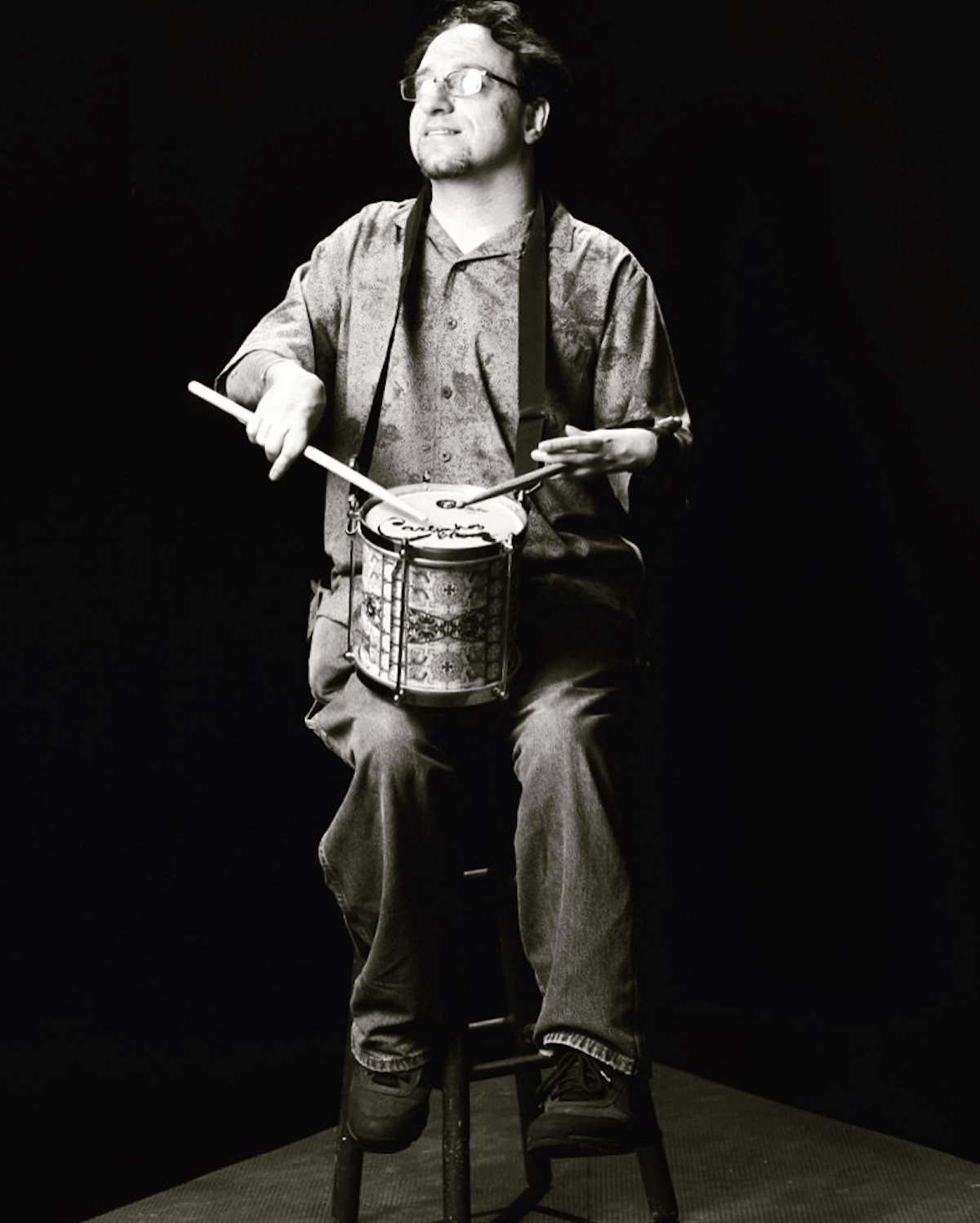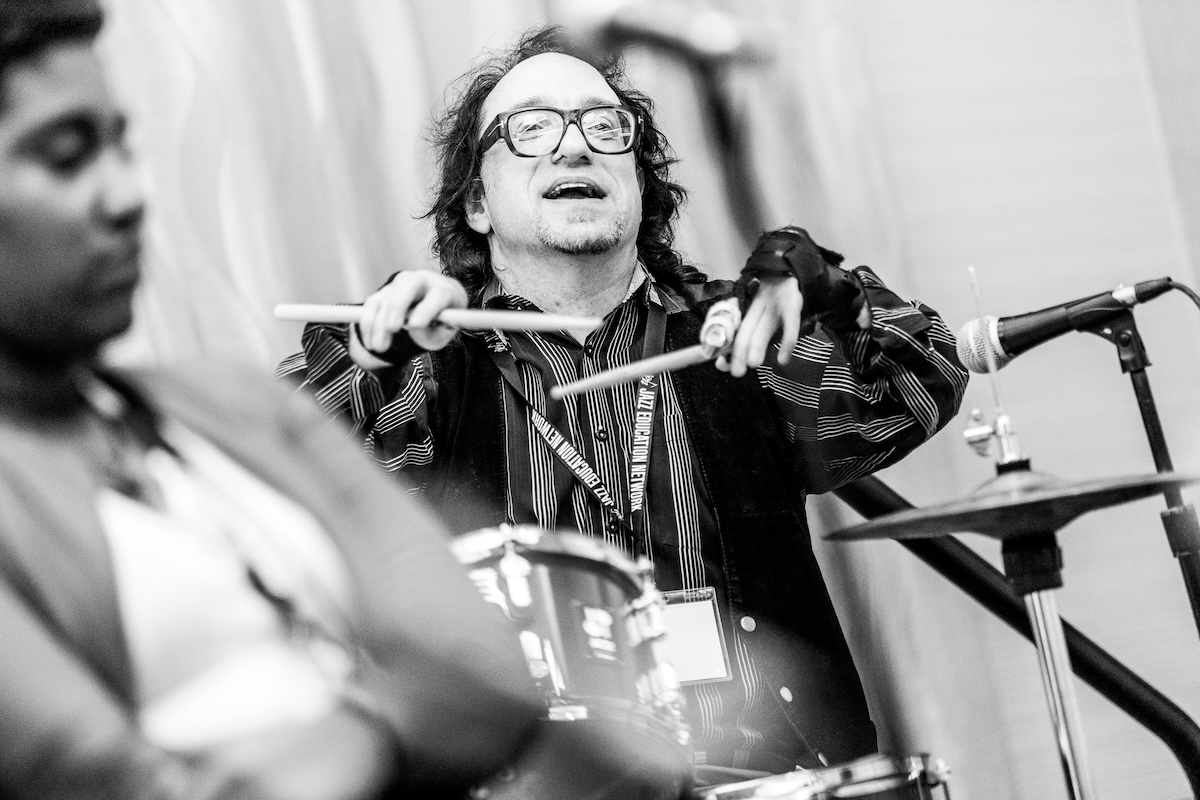David Segal was born with arthrogryposis, a rare birth disorder that limits movements in multiple joints and ligaments in the arms, legs, hands, and feet. In Segal’s case, he was born with legs that were two different lengths, his feet backwards, hips out of alignment, and no muscles in parts of his body. Prior to reconstructive surgeries, his right hand had normal strength with no wrist flexion, and his left hand was almost non-functional.
But that didn’t stop Segal from being an internationally recognized drummer and drum teacher, having worked with famous musicians such as Yoham Chiqui Ortiz, Itaiguara Brandao, Bob Stewart, and Stanley Banks, among others.
As a child, he spent a lot of time in the hospital, undergoing 20 surgeries. He used a wheelchair part of the time, and was bullied at school. Soon, as he learned how to walk, he discovered tennis as a way to overcome his disabilities, to show the other kids that he was just as capable as they were.

“I really became sort of obsessive about it,” he says from his home in Los Angeles.
By the time he got to middle school, Segal hit a wall with tennis. It wasn’t until he heard the school band playing Beatles songs, with his friend on the drums, that Segal became interested in music, particularly percussion.
“One day I was like, I gotta do something with this thing that’s inside me that wants to come out,” he says.
Borrowing a snare drum and a high hat from his friend, Segal started learning U2’s “Sunday Bloody Sunday.” He became hooked.
Because of his disability, however, Segal had to learn how to hold a drumstick with his left hand. Together with his drum teacher, Fred Klatz, he concocted a wristband device to help him. “I had to really work at it because the stick wouldn’t hit properly on the drum head,” he says. “So I would just work at it and work at it to get this into my muscle memory and be able to play.”
Segal also doesn’t have a lot of musculature in his legs, which prohibited him from using the kick pedal.
“I eventually developed a little bit of give where if I put my foot properly on the drum pedal, I could rock it back and forth a little bit,” he says. “And since I’ve been playing for so long now, it’s an automatic motion.”
Klatz, Segal says, had a huge influence on his playing. “He was great because he always thought there was a way to do something,” he says. “He didn’t care about my disability. “He introduced me to so much music that’s become epic to me. He introduced me to Frank Zappa, Terry Bozzio, who’s a drummer from Missing Persons, and Mahavishnu Orchestra, which is this great fusion band.”
When Segal’s father moved to Santa Monica, California, he would invite Segal to visit him. His father often took him to the Fred Segal department store (No relation, by the way). On one such occasion, they saw legendary jazz drummer Buddy Rich there. His father insisted Segal approach him to tell Rich he was a big fan. Segal, naturally shy, declined. So his father did, and Rich, who lived in New York, gave Segal his number and told him to call him.
Rich began inviting Segal and Klatz to his gigs, and eventually befriended them. “It turns out that this is one of the pivotal moments that really kept me going as a drummer and believe in myself,” says Segal about his friendship with Rich. “That I could be a drummer, that I could develop the strength and the dexterity to play.”
Segal made huge strides in his playing under Klatz during high school, using a crude wristband he and Klatz constructed. But after his senior year, he needed to have another painful surgery to address his leg length difference. The surgery left Segal unable to continue his drumming for six months, which led him to fall into depression.


It was Klatz who, using his tough-love approach, encouraged Segal to get back into drumming. Joining a media studies program at Hunter College in New York City, Segal played in the jazz band and after graduation, got a job working at CBS Radio. In the late ’90s, he joined the quasi-punk band the Sin Taxes, playing regular gigs in Greenwich Village and recording an album until he left the group in 2001.
Over the years, Segal has earned his master’s degree in music education and played Carnegie Hall. He’s now a dedicated drum instructor and is one of the founding members of the global nonprofit organization, Can-Do Musos, which provides resources for musicians with disabilities.
“That’s what we try to foster,” says Segal, “trying to give people opportunities to be heard and to perform.”



